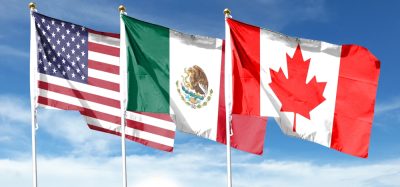TraceGains reveals 2025 food & beverage industry predictions
- Like
- Digg
- Del
- Tumblr
- VKontakte
- Buffer
- Love This
- Odnoklassniki
- Meneame
- Blogger
- Amazon
- Yahoo Mail
- Gmail
- AOL
- Newsvine
- HackerNews
- Evernote
- MySpace
- Mail.ru
- Viadeo
- Line
- Comments
- Yummly
- SMS
- Viber
- Telegram
- Subscribe
- Skype
- Facebook Messenger
- Kakao
- LiveJournal
- Yammer
- Edgar
- Fintel
- Mix
- Instapaper
- Copy Link
Posted: 12 November 2024 | Ben Cornwell | No comments yet
The company forecasts key trends for 2025, highlighting the potential impact of ESG, AI, and regulatory shifts on the food industry.


As the food and beverage industry barrels towards 2025, major shifts are expected across the sector, from regulatory challenges to the integration of cutting-edge technology. TraceGains, a leader in supply chain optimisation and ingredient sourcing, has released its predictions, offering a glimpse into how the industry may evolve in the new year.
Here are the five key trends that they predict brands may need to adopt to stay competitive, resilient, and forward-thinking over the coming year.
ESG pressure builds on all fronts, acting as both an expectation and opportunity
As regulations, consumer preferences, and rising competition put the pressure on food and beverage brands to deliver more sustainable products, demand for ESG-compliant ingredients has moved up the list of priorities. Nearly two-thirds (64 percent) of brands are willing to prioritise ESG-compliant food production. As consumers vote for ESG with their wallets, brands have an opportunity to win their hearts and minds while creating a more sustainable food supply chain that reduces the industry’s environmental impact.
– John Thorpe, Director of Product Management at TraceGains
AI will speed up new product development
Brands recognise that harnessing AI is critical to stay competitive: more than one-third (36 percent) are already testing the waters for NPD. Another 53 percent are considering AI for sourcing ingredients and materials, as well as formulating products. AI can speed up food and beverage formulation by helping companies simulate products digitally rather than physically. Using AI, companies can make a digital twin for each new product, akin to how engineering companies leverage CAD software to model engines and other complex products before actually building them. AI can also help food and beverage companies better understand consumers’ preferences. AI can scrape online data, such as comments in online forums and on social media platforms, to give brands a snapshot of how consumers are talking about their products—and food and beverages in general.
– Greg Heartman, Vice President of Product Management at TraceGains
The regulatory landscape will be marked by uncertainty
The recent overturn of the Chevron Doctrine limits the authority of federal regulatory agencies, including the FDA, to set rules and enforce policies based on their interpretation of the law. This major change at the federal level may lead to new complexities in food safety enforcement, and opens the door for FDA rules to be challenged and litigated. While it’s too early to understand the precise impacts, food and beverage brands should be prepared for a shift in the establishment and enforcement of food safety rules in 2025. Federal oversight may be reduced or delayed, state-level regulations may vary, litigation may become a key enforcement tool, and consumers may become more influential. The results of the upcoming election may compound these uncertainties.
– Kari Barnes, Regulatory Standards Manager at TraceGains
Supply chains shift from linear to networked models
The food and beverage industry is in the midst of an evolution shifting from linear, siloed models to collaborative networks with suppliers and customers powered by data analytics and real-time monitoring. As a result, brands will expand their focus beyond simply cost-efficiency to sustainability goals, responsible sourcing and adaptability. Building agile supply chains that can withstand disruptions while meeting regulatory demand for greater traceability and changing consumer preferences will be table stakes. Success hinges on building good partnerships with co-manufacturers and suppliers.
– Marc Simony, Head of Product Strategy at TraceGains
Brands must take the lead on compliance
An uncertain regulatory landscape and the overturn of the Chevron Doctrine mean there may be less of a federal focus on food safety oversight. At the same time, consumers will still demand safe food and brands will want to continue to ensure their products are safe. As a result, having a strong quality and safety programme will become a positive differentiator for brands, providing an opportunity to reassure consumers that their products are safe to consume and held to the highest quality standards.
– Paul Bradley, Sr. Director of Product Marketing at TraceGains
For food and beverage companies, 2025 is set to be a year of transformation, where innovation, adaptability, and accountability are likely to be key in defining success.
Related topics
Data & Automation, Regulation & Legislation, Robotics & automation, Technology & Innovation, Trade & Economy, World Food








